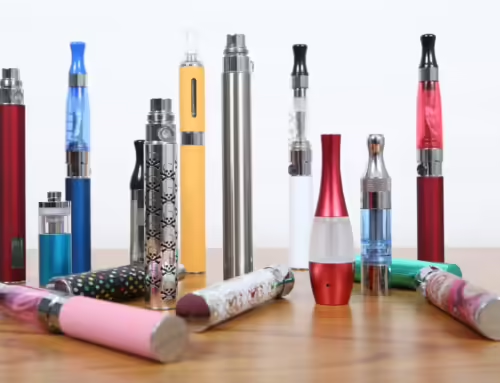In the United States, rates of tobacco use are higher in rural than urban populations, yet rural communities often lack the tobacco control policy coverage present in more urban areas. While there are several reasons why policy adoption may be more challenging in rural areas, some rural communities have found success with local-level tobacco control policies.
In the United States, rural communities often face a disproportionate burden of health harms related to commercial tobacco use. Research shows that rates of tobacco use are higher in rural than urban populations, yet rural communities often lack the tobacco control policy coverage present in more urban areas. There are several reasons why policy adoption may be more challenging in rural areas. Some qualitative findings point to rural communities being more likely to see tobacco legislation as impeding on individual rights. In addition, rural communities often lack the resources and infrastructure to enforce additional tobacco legislation. Another concern for tobacco-producing states is the potential for a disruption in economic relationship with the tobacco industry. Despite these challenges, some rural communities have found success with local-level tobacco control policies.
Tobacco Retailer Licensing
One important local-level policy option is tobacco retailer licensing (TRL). Generally, TRL requires that the city or county issue both new and existing businesses a license before they are allowed to sell tobacco products. Strong local-level ordinances are a key aspect of establishing and funding effective enforcement. Key features of a strong TRL policy include an annual license fee that covers the costs of administration and enforcement, a requirement that the license is non-transferrable and renewed annually and meaningful penalties (e.g., license suspension or revocation) for violations. There are several benefits to implementing or strengthening TRL policies, including the opportunities to:
- Maintain a list of tobacco and e-cigarette retailers
- Provide retailers with education on the tobacco laws they must comply with
- Ensure every retailer in a community is visited each year for a compliance check
- Reduce the density or clustering of retailers
- Restrict businesses located near schools or youth-oriented facilities from selling tobacco
- Reduce sales to youth
- Restrict the types of businesses that can sell tobacco
TRL in Rural Communities
Studies show that the most impactful restrictions that can be implemented and enforced through licensing depend on the type of community, which is why it is so important to consider the unique attributes of rural communities when establishing ordinances for these areas. For example, caps on retailer proximity have been found to be less impactful in rural areas where retailers are more spread out. Instead, a modeling study conducted in Ohio suggests that capping the number of tobacco retailer licenses issued in a geographic area (e.g. to 1 per 1,000 people) may be an effective way to reduce rural-urban disparities in tobacco retailer density.
With these considerations in mind, there are several examples of rural communities that have successfully implemented TRL policies:
- Kern County, California: Despite a statewide tobacco licensing requirement in California, some communities, including largely agricultural Kern County, have implemented their own local TRL programs. The Kern County Board of Supervisors unanimously passed a TRL ordinance in October 2006, resulting in eight local cities adopting the ordinance between then and 2016. The Kern County Public Health Services Department serves as the sole enforcement agency for the county. Having the larger county government function as the single lead enforcing agency has been integral to the success of smaller communities in Kern County that often struggle with enforcement due to limited services and resources. The county ordinance has gone through several amendments since its adoption, including updating definitions, increasing permit fees and adding a risk-based approach in retailer permitting. In order to incentivize retailers to comply with the law, those with a history of violations pay a higher fee for their annual license, compared to those with no violations. Read the full case study from Public Health Law Center.
- Rock County, Minnesota: A key to the success of the TRL law in Rock County, located in rural southwestern Minnesota, is its clear policy language. Rock County’s ordinance contains explicit requirements for tobacco retailers, including strong definitions, restrictions on retailer density and concentration and a ban on tobacco sales by pharmacies. This was made possible by strong collaboration and planning coordinated by the county attorney, the tobacco control staff of the county’s public health service provider and law enforcement leaders.
- Willits, California: Willits is a small rural city located in Mendocino County, with only 13 tobacco retailers. The Mendocino County Health Department serves as the single lead agency, proving essential to the successful implementation and enforcement of the Willits licensing ordinance. In order to keep the process simple, Willits uses a one-step enforcement process to impose license-related penalties for sales to youth violations without going first to court. Because it is such a small community, the health department is able to use staff time to check all retailers twice a year. Upon the first violation, retailers can choose to conduct a training on sales-to-youth laws to avoid suspension. With only 13 tobacco retailers, the health department can easily monitor these trainings and quickly identify repeat offenders without the bureaucratic burden of a hearing process. For more information on tobacco retailer licensing ordinances in Willits and several other California communities, see this case study from the Technical Assistance Legal Center.
This post was originally published as a feature article for The Geographic Health Equity Alliance (GHEA), a CADCA initiative. GHEA is a CDC funded National Network dedicated to reducing geographic health disparities related to tobacco and cancer.





